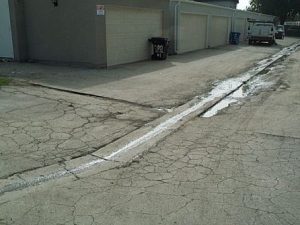You’ve been told that you should have a Reserve Study. But why should you pay for a Reserve Study if you already know you have significant budget limitations and don’t expect to raise the dues to collect more Reserves? After all, you’ve heard that’s what a Reserve Study usually tells you to do. Why spend money on something you can’t use, that will probably make you feel bad about what you’re not doing? Many Association-governed communities find themselves contemplating these questions. So let’s look at what’s involved and the value a Reserve Study delivers.
Reserve expenses at your association are, by nature, very irregular from year to year. Given that randomness, how can you responsibly plan for such repair & replacement expenses in the future? Fortunately, those individual expenses are very predictable. Together they may look random, but individually all those projects have predictable Useful Lives, Remaining Useful Lives, and Replacement Costs.
Reserve Studies Allow for Fairness
If you’re living at the Association, you are enjoying all the common areas. You enjoy the pool, the common roof, and even if you don’t play tennis you enjoy what a tennis court does for your home’s value. It is only fair for you to pay for the deterioration of those components that are gradually getting older while you are a homeowner. That’s fundamentally what a Reserve Study attempts to do… take all those irregular Reserve expenses ($/year) and distill them down to a very steady deterioration rate ($/month) that the association “should” be collecting from all the current owners in order to keep pace with the ongoing deterioration of the common area.
That’s why it is possible to state that the Reserve contribution rate recommended in the Reserve Study is not for a future expense that is some other unlucky person’s problem. The recommended Reserve contribution is designed so each homeowner pays their fair share of ongoing Reserve component deterioration during the months and years they own a home in the Association. It’s only fair. In fact, it is unfair for any owner to pay less than ongoing deterioration, forcing some unlucky future owners to over pay their for past under-reserving!
What is a Normal Reserve Contribution Rate?
So what is a “normal” reserve contribution rate? In our experience, “adequate” Reserve contributions typically make up anywhere from 15% to 40% of an association’s total budget. The cost of Reserve component deterioration is expensive! Are there ways to minimize your Reserve contributions? Yes:
- Make sure your Reserve contributions are calculated using the “cash flow” computation method
(resulting in fairer, smoother, and lower contributions) - Maximize the interest you are getting on your Reserve funds (if possible)
- Perform timely maintenance in order to extend the life of your reserve components
But there is no “magic bullet”. Your Reserve components are expensive, and they are silently deteriorating every day.
Not Following Your Reserve Study: Deferred Maintenance
Some Associations try to save on Reserve expenses by deferring a project. A strategy of deferred maintenance may result in some minor savings, but typically is only successful with non-critical repairs like going without hot water in the pool bathrooms for a while, or living without the recreation room A/C. Delaying one of your larger projects (asphalt sealing, wood or ironwork painting, or roofing) often only increases the cost to the association. This is because failure to perform these projects in a timely manner often leads to more deterioration than the original scope of work.

The driveway pictured above belongs to an Association that thought they were saving money by not seal-coating their asphalt. That decision led to complete premature failure of their entire driveway system. In addition to being unsightly, the ensuing “remove & replace” project will cost about 10 times as much as that less expensive seal coat project they failed to perform a few years ago.
The bottom line is that it is rare circumstance where a delayed project results in a noticeable drop in Reserve contributions.
Reserve Fund Strength & Special Assessment Risk
Now let’s turn our attention to the subject of Reserve Fund Strength. Reserve Studies that are prepared in accordance with National Reserve Study Standards contain a calculation of Reserve Fund Strength (a ratio called % Funded) that measures how well the Reserves on hand have kept pace with the deterioration that has already taken place. One of the values of performing this calculation is how directly it correlates to Special Assessment Risk, as represented on the colorful chart:

- 0-30% Funded is the “weak” range, where special assessments are common
- 30-70% Funded is the “fair” range, where most associations reside
- 70-130% represents the “strong” range, where special assessments are rare
The size of your Reserve contributions will cause “Percent Funded to trend up or down over the years, representing either a strengthening or weakening of your Reserve Fund position. If your Association is gradually under-reserving, Percent Funded will decline, resulting in increased risk of a Special Assessment. If the Association is strengthening its financial position, % Funded will increase, lowering the risk of a Special Assessment.
A Reserve Study’s Component List
Finally, a current-year Reserve Study provides the Board and homeowners with the scope and schedule of anticipated reserve projects with a Component List. Because each project has a predictable schedule (determined by Useful Lives and Remaining Useful Lives) and scope (determined by replacement cost), there is no need to wonder when the buildings will be repainted, or when the pool furniture is slated to be replaced. A regularly updated Reserve Study eliminates mysteries and surprises.
Living in a community association involves being part of a “community” of other owners, with whom you share expenses. Each year, take the time to look at your updated Reserve Study. There is valuable information there for Managers, Boardmembers, homeowners, and prospective homeowners alike!
